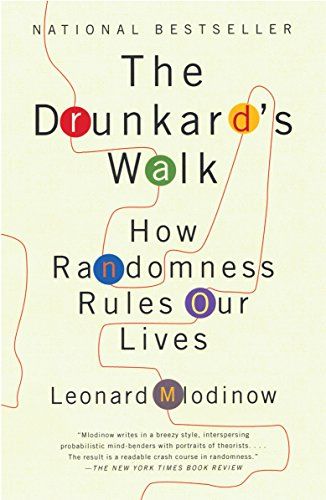Book Review - Drunkard’s Walk
5 Takeaways on How Randomness Rules Our Lives
November 27, 2022
I recently read Leonard Mlodinow’s wonderful book, Drunkard’s Walk: How Randomness Rules Our Lives. It’s a conversational read on the history of probability scholarship. Here are my 5 key takeaways.

1. For much of human history, we didn’t have the tools to think deeply about probability
In Ancient Greece, most people attributed the outcomes of chance operations to fate and the will of the gods. But they also didn’t have the mathematical tools to make detailed calculations. We now benefit from innovations around the world, including the discovery of zero and notational base ten number systems.
2. Establish Space of Possibilities
When considering the odds of an outcome, list all possibilities. By doing this, we can see the solution to the Monty Hall problem.
3. Probability is directional
The probability that A will occur if B occurs will generally differ from the probability that B will occur if A occurs. Mlodinow points to the trial of Sally Clark. After her two children died, she was prosecuted for murder. In “trial by mathematics,” the prosecution argued that it is highly unlikely that two children would die of natural causes. But that is a prediction meant to assess outcomes prior to the deaths. But for the trial, the relevant mathematical question is: a mother has lost two of her children, what are the most likely causes of death?
Similarly, the rate of false positives on a medical test is not the same calculation as determining if someone’s positive test was a false positive.
4. Perceptions of Probability
People frequently underestimate the frequency of randomness and overestimate the power of human control. Statistically, randomness will sometimes create patterns or clusters of data. For example, if you flip a coin 1000 times, there will likely be a string of several heads in a row.
People are also more likely to create patterns that fit into a mental model they already have. We use data to confirm our biases, especially when data is serves a larger story.
Consider a test where participants were given a description of a person and had to rank the probability of outcomes.
Description:
“Imagine a woman named Linda, thirty-one years old, single, outspoken, and very bright. In college she majored in philosophy. While a student, she was deeply concerned with discrimination and social justice and participated in antinuclear demonstrations.”
Rank the probability of these outcomes:
1: Linda is active in the feminist movement
2: Linda is a bank teller and is active in the feminist movement
3: Linda is a bank teller
87 percent of the subjects ranked #2 higher than #3. Even though #2 could only be true if #3 was also true. So #3 has to be more likely. But #2 tells a more specific story.
5. Terms: Predicting Errors and Quantifying the Unknown
A few terms from the book:
- Central limit theory describes how errors and randomness often cancel each other.
- Law of large numbers theorizes that the more times an experiment is conducted, or the larger the sample size, the more the random errors will balance out.
- Pascal’s triangle is a visual representation of a formula that predicts expected variation in an experiment or test.
- Coefficient of correlation is a numerical measure of how two variables may be dependent on each other.
- Chi-squared test measures if the results are beyond the expected random variation.
Learn more about using data to assess and inform tactics view my Analytics Remarks.